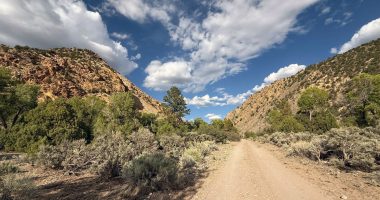Infini Resources (ASX:I88) has unveiled what it believes could be the highest ever soil sample uranium concentrations found in Newfoundland, Canada, at its Portland Creek Project. Shares jumped up 53% to 75cps at lunchtime on Wednesday, boosting the company’s market cap up to $28.49M.
More eye-catching, 1Y returns are now 275% as traders move to get in on a company that could, possibly, have just made the history books – as far as geological data is concerned.
Broken down into parts per million (ppm), high-grades of uranium nearing 75,000ppm have been found in surface soils – a read of 7.5%. (Parts per million is easier to understand when you consider that 10,000ppm = 1%).
A full table of samples released by the company on Wednesday included:
- One sample at 74,997ppm
- One sample at 53,182ppm
- One sample at 43,512ppm
- One sample at 39,975ppm
- One sample at 39,621ppm
A total of seventeen samples were pulled from the company’s Portland Creek project which Infini chief Charles Armstrong believe have a solid shot at reflecting the highest-ever uranium grades found in the region.
“[These results] have improved our confidence in finding a potential uranium deposit,” Armstrong told The Market Online on Tuesday – in the salient fashion that only the Corporations Act can manufacture. Behind closed doors, he’s more excited about the finds – and the tantalising prospect that further high-grade hard rock mineralisation exists underground.
The importance of this news, should it be the case these are the highest uranium grades ever found in soil, could perhaps be lost in the overwhelmingly sober atmosphere of an ASX announcement.
However, there’s another way of looking at it – if Armstrong’s hunch is right, Infini could have just made uranium history.
Figuring out whether these are indeed the highest grades ever found will take people from different countries speaking different languages poring through different journal articles and company mine plans – and ideally centralising and regularly updating their collective research efforts, which would probably take a few years to achieve. So pinpointing down the absolute truth of that claim could be a more philosophical consideration.
Of course, 7% percent uranium is pretty good no matter how you look at it, even if we’re talking preliminary soil assays. There are some observations one can make the paint the significance of such results.
Arafura Rare Earths (ASX:ARU), for one – whose daily business is knowing about radiation levels given that most REEs are partially radioactive – states the natural background level of thorium in rocks and soils is 11ppm.
While that mightn’t reflect a very good comparison point given the natural background level does not by its very nature contain anomalous pockets of concentration the interest of explorers, it does at least help paint an idea of how strong Infini’s results are.
Perhaps the quickest way to understanding the value proposition put forward by the results, parts per million, generally used to capture concentrations of sparse metals in ore, could just be swapped out for a percentage measurement.
Whatever the case, with 7.49% uranium (or 74,997ppm) in soil assays – undeniably high – it’s not controversial to suggest the company has geology other uranium explorers would yearn for.
This isn’t the first time the company has hit big numbers in soil sample runs. Initial assay results had a limit of detection at 11,792ppm; these latest assays show all samples exceed that ceiling.
“I am not aware of any other explorers that have returned results close to what we are seeing here in our maiden fieldwork program,” Infini CEO Charles Armstrong said.
“We now eagerly wait for processing of the UAV drone magnetic survey that was flown over Talus to see what potential structural controls exist linked to this special anomaly.”
“These follow-up assay results confirm that the Company has encountered world class grades of uranium in soil samples at Portland Creek.”
No doubt shareholder enthusiasm is a story of dual catalysts. First, what could be the world’s highest uranium soil grades. Second, a still fairly robust YTD uranium rally that sees prices holding firm above pre-Fukushima levels.
Investors outside of Australia may be interested to know that the island continent down under, despite boasting one of the world’s largest natural hard rock uranium endowments and no shortage of publicly listed uranium explorers, has no nuclear reactors of its own outside of hospitals and universities.
Australia also has no shortage of companies listed on the ASX but operating in Canada. That country’s major uranium miner, Cameco, helped to tank uranium prices in February this year when it said it would boost global supply to help make up a shortfall coming from issues at Kazatomprom.
Prices dipped below US$100/lb down to where they sit on Wednesday afternoon heading into the last two hours of trade, around US$85/lb.






